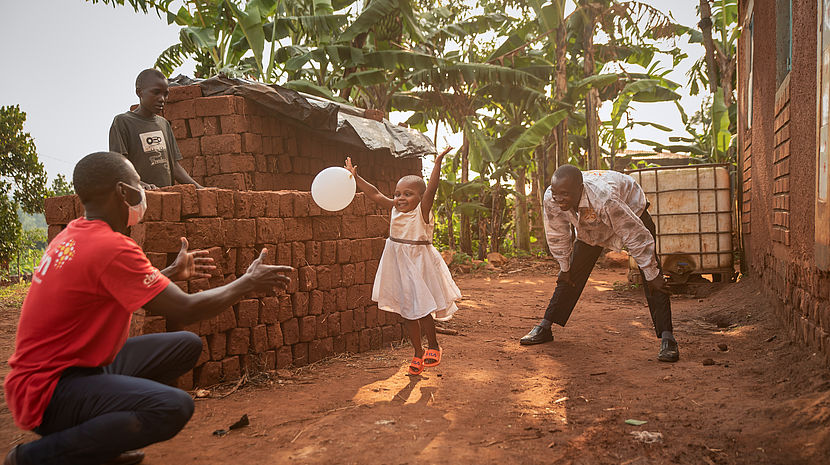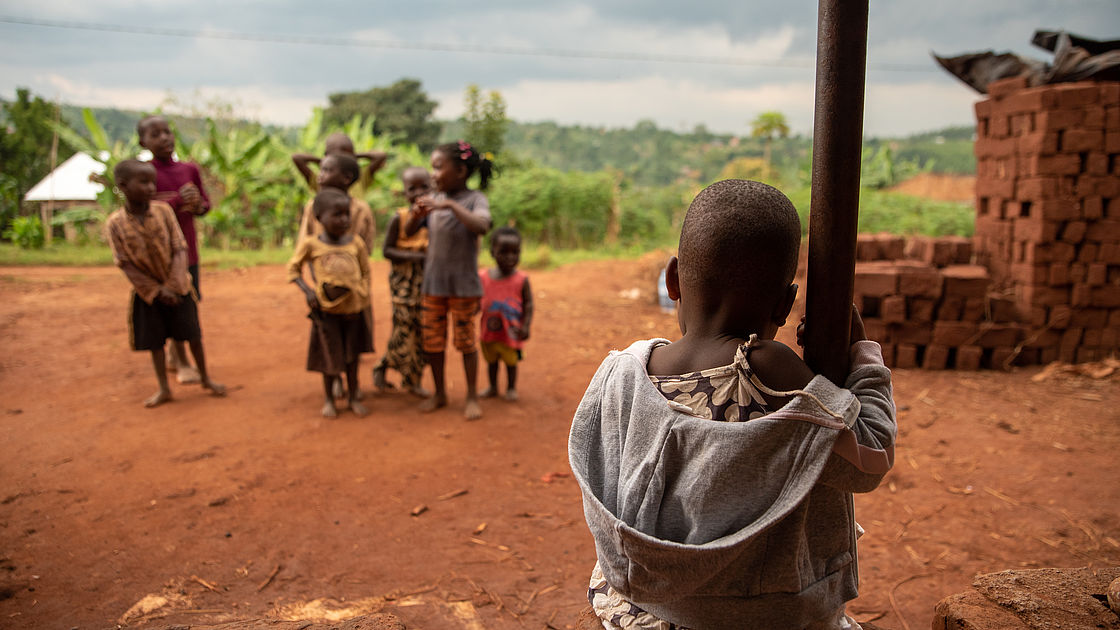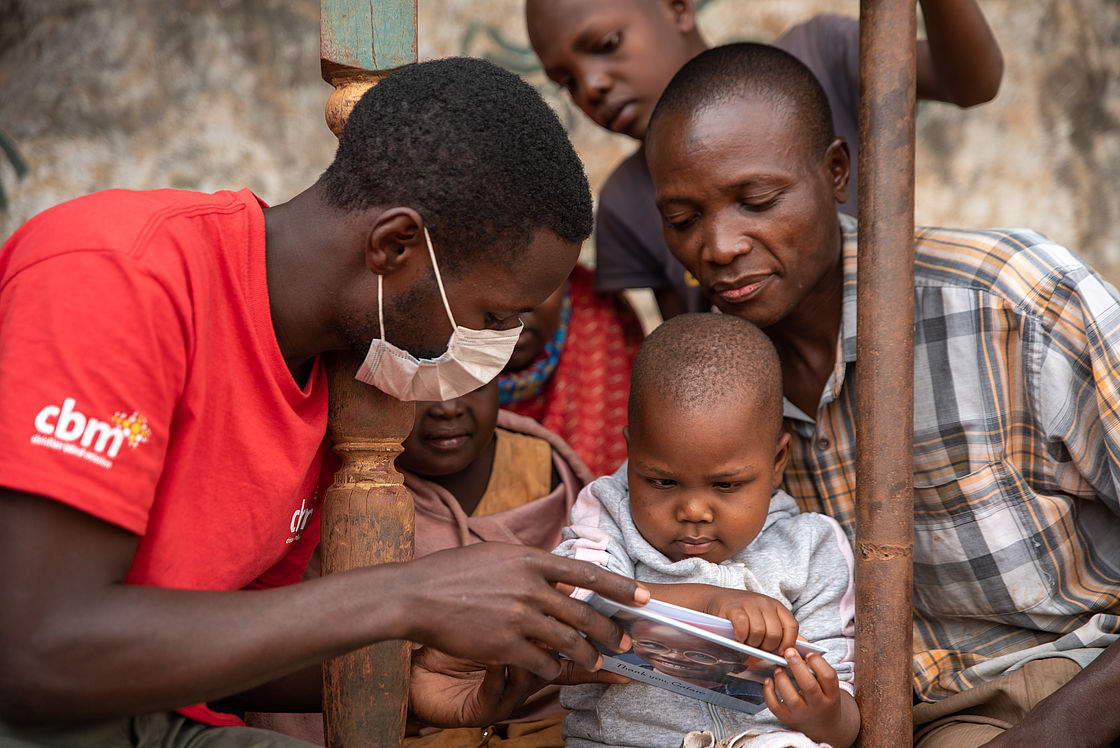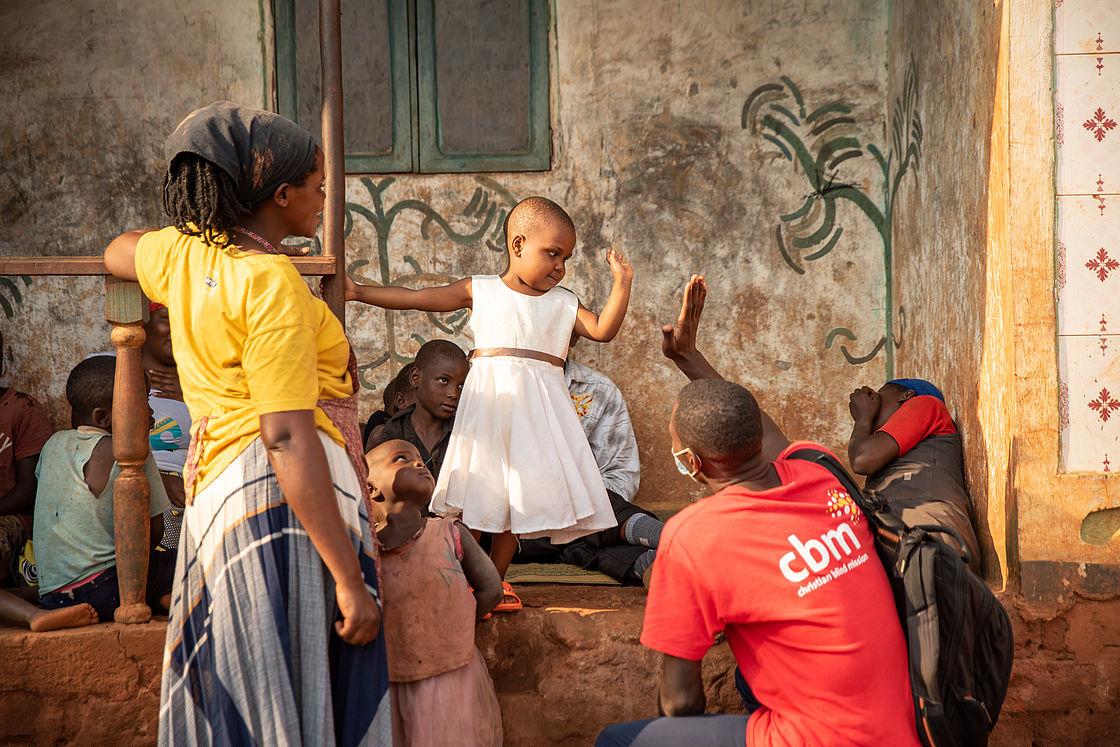Celebrating 15 Million Cataract Operations - Nakisinde's Story

CBM celebrated a milestone in 2020 – the recipient of our 15 millionth cataract operation was a three-year-old child, Nakisinde in Uganda. She is pictured here playing with social worker Simon Mugerwa after her cataract surgery.
© CBM
Thanks to all our wonderful donors, CBM was able to carry out the 15 millionth cataract operation this year! Because of this surgery, three-year-old Nakisinde from Uganda can finally discover the world with her own eyes.
15 million chances for a better life
CBM celebrated a milestone this year – the recipient of our 15 millionth cataract operation was a three-year-old child, Nakisinde in Uganda. CBM has reached this milestone thanks to our doctors working tirelessly to provide eyesight for the past 53 years.
Nakisinde’s background
Nakisinde lives in a village north-west of the Ugandan capital Kampala. Her house is on a hillside, surrounded by fields with red earth. Green eucalyptus trees grow in the neighbourhood. And when the bananas around the village ripen and yellow, she can smell them. But unlike her father Kakoza and her mother Madinah, unlike her six siblings, Nakisinde cannot see the bananas and the world around her. The reason - Nakisinde has bi-lateral cataract.
Nakisinde is the youngest of seven children to grow up in a rural region in central Uganda. When she was one year old, her father Kakoza noticed a small spot on her eye. He is increasingly worried: he holds her toys right under her nose, but is barely able to incite any reaction from Nakisinde. Growing up with cataract in her village has been tough for her. She longs to play with the other kids, but she can only stand to the side and watch. When she joins them, she is unable to keep up – she falls, she gets injured, and is easily frustrated.
An examination at the CBM partner hospital Mengo in Kampala announces the diagnosis: the little girl has cataracts in both eyes, a clouding of the eye lens. This can be replaced by an artificial lens. But how will the parents pay for this vital operation? Surgery in CBM-funded projects costs about 30 euros for adults, and 125 euros on average for children like Nakisinde because of the required general anaesthesia. It seems like an insurmountable goal for her family, simply because it is too expensive. ‘Never in our lives can we earn so much money’, says Nakisinde’s father. Her parents work as farmers, earning the equivalent of 2.36 euros a day.

Nakisinde is unable to join her friends during play-time.
© CBMA consequential visit
At Mengo hospital, CBM community worker Simon Nakisinde takes a close look. He knows that she urgently needs a free surgery sponsored by CBM. So he sets off to Nakisinde's village. And when he knocks on the family's door, no one inside has any idea how important this visit is. Simon explains to Nakisindes' parents that she can be operated for free at the CBM-funded Mengo Hospital – her parents are left speechless ... The are fearful about the complicated medical procedures, but their hope for a better future for Nakisinde pushes them to set off for Kampala on a Boda Boda, the motorcycle taxi.
Nakisinde is the first patient to be operated in the morning. As she falls asleep under general anaesthesia, Dr. Lisbon Aliraki and his team say a prayer. And so begins the surgery.

Simon Mugerwa (Mengo hospital social worker) interacts with Nakisinde and the rest of the family showing them pictures of past surgeries done at Mengo Hospital and success stories from the different surgeries performed.
© CBMA successful operation
24 hours after the operation, a nurse removes the bandages. At first, Nakisinde scrunches her eyes tightly. But CBM community helper Simon can arouse her curiosity. "Look what I have for you here," he says, holding up a small wooden giraffe. She opens her eyes cautiously and starts to discover the colourful world around her...
When Nakisinde arrives back in her village she happily greets her siblings and neighbours. She grabs a CBM balloon and lets it fly high up and she shouts to her father, "Kwata, tata - catch, Dad!"
After the successful cataract operation, Nakisinde can see clearly. Her new vision presents countless opportunities to her – she can go to school to learn to read and write, she can play with her friends, and pursue all her dreams. And maybe one day, who knows, even become a doctor, fulfilling her father’s hope for her.

Nakisinde is in high spirits after her surgery and gives a high five to Simon during his visit.
© CBMThank you to everyone who made this possible. You have breathed new life into my daughter!Kakoza, Nakisinde’s father
Cataract is the most common cause of blindness worldwide
2.2 billion people live with visual impairments globally. Of these, 36 million people are blind and 217 million are severely visually impaired. Most of them live in developing countries. Around three-quarters of all visual impairments could be avoided or cured – including cataract, which is by far the most common cause of blindness worldwide. But, like Nakisinde's family, many people in developing countries cannot afford the much-needed medical treatment because they lack the money. CBM CEO Rainer Brockhaus emphasises: "Poverty and poor medical care are partly responsible for the fact that millions of people are blind and thus have bleak prospects of an independent life. With every cataract operation, CBM is providing fairer opportunities to them."